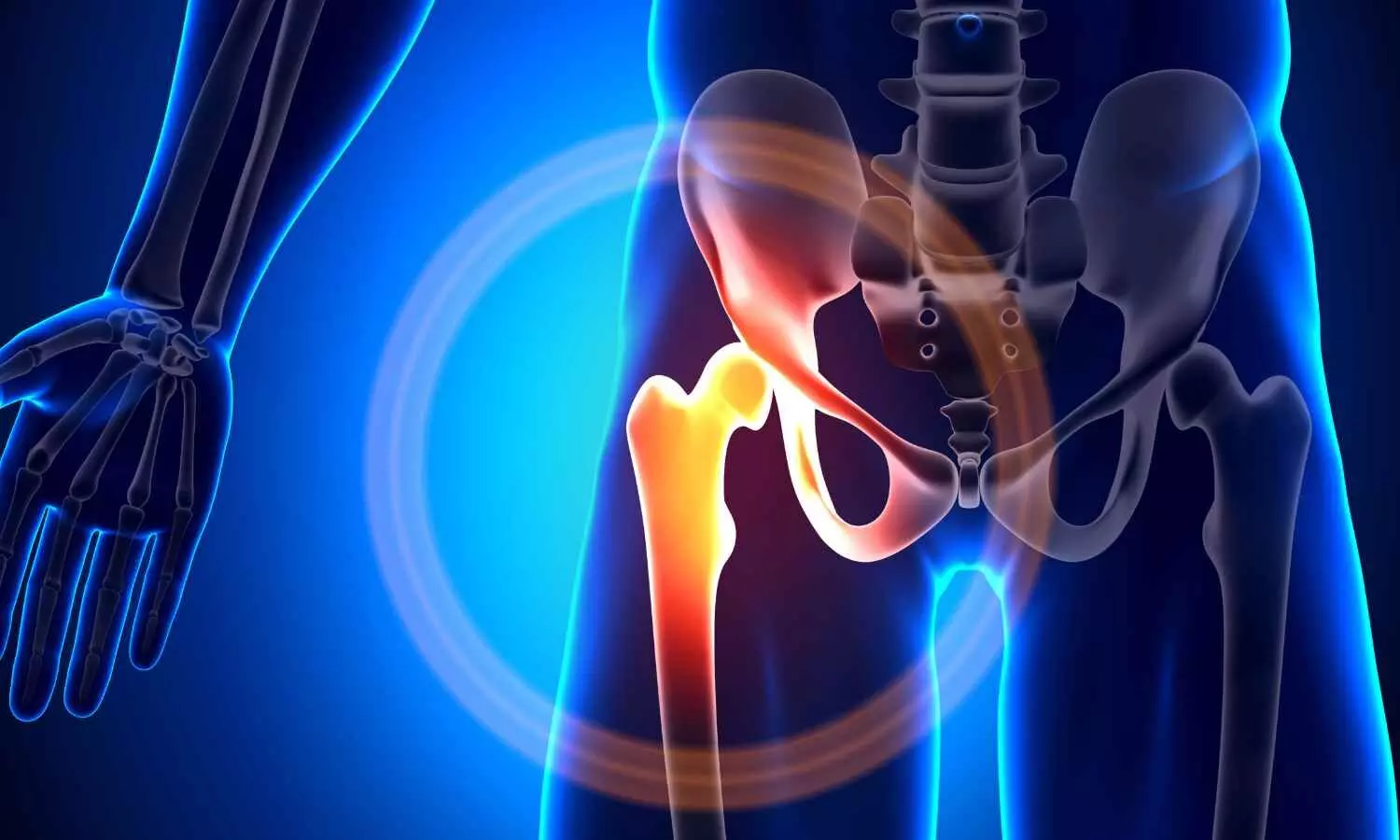Black youth, especially Black girls, use mental health services less than their white peers, study finds
Powered by WPeMatico
Powered by WPeMatico
Powered by WPeMatico

Belgium: The European Society of Cardiology (ESC) and the European Atherosclerosis Society (EAS) have released a 2025 Focused Update to their 2019 Guidelines for the management of dyslipidaemias, introducing crucial revisions and new recommendations based on recent scientific evidence. The update, published in the European Heart Journal, aims to refine approaches to cardiovascular (CV) risk assessment and lipid-lowering therapies, particularly ahead of the next comprehensive guideline revision.
Powered by WPeMatico
Powered by WPeMatico
Powered by WPeMatico
Powered by WPeMatico

Canada: Women entering pregnancy with multiple chronic conditions (MCC) face significantly higher risks of severe maternal complications, including morbidity and mortality, according to a large population-based study from Ontario, Canada. The study also found that emergency department visits and hospitalizations were more frequent among these women, highlighting the need for tailored, multidisciplinary care.
The research, led by Hilary K. Brown from the Department of Health and Society, University of Toronto Scarborough, along with colleagues, was published in BJOG: An International Journal of Obstetrics & Gynaecology. The study analyzed data from females aged 13–54 years with recognized pregnancies between 2012 and 2021, examining how the presence and type of chronic conditions before conception influenced maternal health outcomes up to 42 days postpartum.
Using modified Poisson regression models adjusted for age, parity, income, rurality, and immigrant or refugee status, the team assessed the impact of the number of chronic conditions, complex MCC (defined as three or more conditions affecting at least three body systems), and co-occurring cardiometabolic conditions. The outcomes measured included perinatal emergency department (ED) use, hospitalizations, and severe maternal morbidity or mortality (SMM-M).
Based on the study, the researchers reported the following findings:
• The study analyzed 1,373,193 pregnancies.
• Among these, 894,042 women had no pre-pregnancy chronic conditions, 357,398 had one condition, 94,427 had two conditions, and 27,326 had three or more conditions.
• Maternal risk increased stepwise with the number of chronic conditions.
• Adjusted relative risks (aRR) for severe maternal morbidity or mortality (SMM-M) within 42 days postpartum were:
• 1.38 for women with one chronic condition
• 1.82 for women with two chronic conditions
• 2.75 for women with three or more chronic conditions
• Women with complex MCC (three or more conditions affecting at least three body systems) had an aRR of 2.92.
• Women with three or more cardiometabolic conditions had an aRR of 5.45.
• Emergency department visits increased with the number of chronic conditions, with women having three or more conditions showing a 1.86-fold higher risk.
• Hospitalizations were also higher, with a threefold increased likelihood for women with three or more chronic conditions compared with those without chronic conditions.
These findings emphasize that MCC, particularly when complex or cardiometabolic in nature, is strongly associated with adverse maternal health outcomes. The authors suggest that multidisciplinary, patient-centered care could help mitigate these risks and improve postpartum recovery.
The study also notes that MCC is socially patterned, disproportionately affecting individuals with lower socioeconomic status, which may amplify healthcare costs and mortality risks. Future research is needed to identify which socioeconomic factors influence these associations, as well as to evaluate a broader range of perinatal and extended postpartum outcomes to better support mothers with MCC and their infants.
“Overall, this study provides important evidence for healthcare providers, underscoring the necessity of preconception risk assessment and comprehensive care planning for women with multiple chronic conditions to reduce maternal complications and improve pregnancy outcomes.
Reference:
Brown, H. K., Fung, K., Cohen, E., Dennis, L., Grandi, S. M., Rosella, L. C., Varner, C., Vigod, S. N., Wodchis, W. P., & Ray, J. G. Multiple Chronic Conditions Before Pregnancy and Risk of Adverse Maternal Health Outcomes: Population-Based Cohort Study. BJOG: An International Journal of Obstetrics & Gynaecology. https://doi.org/10.1111/1471-0528.18347
Powered by WPeMatico

Compared with dual antiplatelet therapy (DAPT), a de-escalated DAPT strategy resulted in similar graft occlusion rates and reduced clinically relevant bleeding in patients who underwent coronary artery bypass grafting (CABG), according to late-breaking research presented in a Hot Line session today at ESC Congress 2025.
Saphenous vein grafts remain the most frequently used conduits in CABG; however, failure rates are high, with 3−12% occluding before hospital discharge and 8−25% failing at 1 year.
“After CABG, decreased risk of saphenous vein graft failure has been observed with 12 months of DAPT (aspirin plus a P2Y12 inhibitor) but this was accompanied by an increased risk of bleeding,3” explained Investigator of the TOP-CABG trial, Doctor Xin Yuan from the State Key Laboratory of Cardiovascular Disease, Fuwai Hospital, National Center for Cardiovascular Diseases, Beijing, China.
“Rather than receiving DAPT for 12 months, a de-escalated strategy of DAPT for 1 or 3 months then aspirin monotherapy for 9 or 11 months is associated with similar ischemic benefits and better bleeding safety in patients after percutaneous coronary intervention (PCI). Mirroring PCI, the first 3 months after CABG surgery is a high-thrombotic-risk phase, but studies of de-escalated DAPT are lacking. Thus, we designed the TOP-CABG trial to compare the effects of de-escalated DAPT and DAPT on patency and bleeding events for 1 year after CABG.”
TOP-CABG trial was a double-blind, parallel-controlled randomised trial conducted at 13 hospitals in China. Patients older than 18 and younger than 80 years old were recruited if they were undergoing planned CABG for the first time with at least one saphenous vein graft. Patients were randomised 1:1 to de-escalated DAPT (ticagrelor 90 mg twice daily plus aspirin 100 mg once daily for 3 months, then placebo twice daily plus aspirin 100 mg once daily for 9 months) or to DAPT (ticagrelor 90 mg twice daily plus aspirin 100 mg once daily for 1 year).
The primary noninferior efficacy endpoint was 100% occlusion of the saphenous vein graft within 1 year after CABG at the per-graft level, with occlusion assessed by coronary computed tomography angiography or coronary angiography. The prespecified noninferiority margin was 3.5%. The primary superior safety endpoint was clinically relevant bleeding at the per-patient level (Bleeding Academic Research Consortium [BARC] classification ≥2) within 1 year.
The 2,290 patients included had a mean age of 61.5 years and 20.6% were female.
Noninferiority was demonstrated for the primary efficacy endpoint of graft occlusion, which occurred in 10.79% of patients’ grafts in the de-escalated DAPT group and 11.19% in the DAPT group (difference −0.31%; 95% confidence interval [CI] −3.13 to 2.52; p=0.008). The primary safety endpoint of clinically relevant bleeding was less frequent with de-escalated DAPT vs. DAPT (8.26% vs. 13.19% of patients; HR 0.62; 95% CI 0.48 to 0.81; p<0.001).
There was no difference between the groups for secondary outcomes including graft failure, any graft stenosis, any graft occlusion or major adverse cardiac and cerebrovascular events.
Doctor Yuan concluded: “In the largest CABG trial to date, a de-escalation strategy offered a better balance between graft patency protection and bleeding risk than DAPT. These findings may help to inform future guidelines regarding the benefits of a shorter period of DAPT during the early phase after CABG.”
Powered by WPeMatico

Taiwan: Children exposed to daily incense burning or those who had recently taken antibiotics face a significantly higher risk of developing acute bacterial paranasal sinusitis (ABPS), according to a recent study published in BMC Infectious Diseases. The research, led by Ting-Fang Chiu and colleagues from the Department of Pediatrics at Taipei City Hospital, highlights key environmental and medical factors contributing to this common pediatric infection.
Powered by WPeMatico

A new study published in the journal of BMC Surgery revealed that longer waiting times before hip fracture surgery were linked to higher 30-day mortality risk in elderly patients, with a threshold of around 42 hours marking significantly increased risk.
This study from the Affiliated Kunshan Hospital of Jiangsu University conducted a retrospective cohort study of 818 patients aged 65 and older who underwent surgery for hip fractures between January 2017 and July 2022. The study examined patient outcomes relative to surgical delays, highlights the importance of timely surgical intervention to improve survival chances in older individuals.
The study evaluated a broad range of clinical and demographic factors. These included patients’ age, gender, body mass index (BMI), type of hip fracture, surgical procedure performed, anesthesia risk (measured by American Society of Anesthesiologists score), operation time, month and week of hospital admission, and key laboratory test results. By controlling for these covariates through logistic regression analysis, this study isolated the independent effect of waiting time on 30-day mortality.
The analysis demonstrated a clear positive association between waiting time and the risk of death within 30 days of surgery. Specifically, the results indicated that every additional 10 hours of surgical delay was linked to a 13.6% increase in 30-day mortality (odds ratio [OR] 1.136; 95% confidence interval [CI], 1.027–1.256; P = 0.0136).
The relationship between waiting time and mortality was not linear. Statistical modeling revealed a threshold effect, when the waiting period was less than 42.4 hours, there was no detectable increase in 30-day mortality risk.
However, delays beyond 42.4 hours were associated with a sharply elevated risk of death. This nonlinear pattern emphasizes that while minor surgical delays may not be fatal, longer postponements can have serious, life-threatening consequences.
The findings carry significant implications for hospitals and healthcare policymakers. In many clinical settings, delays in hip fracture surgery occur due to resource constraints, patient stabilization needs, or scheduling bottlenecks. The evidence from this study suggests that efforts to reduce waiting times could markedly improve survival outcomes in elderly patients.
Overall, the study highlights the urgent need to treat hip fractures in older adults as a medical emergency requiring prompt surgical intervention. The identified threshold of 42 hours may serve as a clinical benchmark for prioritizing surgical scheduling and optimizing patient outcomes.
Source:
Xu, M.-Z., Lu, K., Ye, Y.-W., Xu, S.-M., Shi, Q., Gong, Y.-Q., & Li, C. (2025). Waiting time and 30-day mortality association in elderly patients having hip fracture surgery. BMC Surgery, 25(1). https://doi.org/10.1186/s12893-025-03140-z
Powered by WPeMatico
